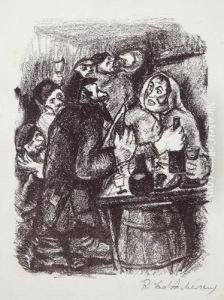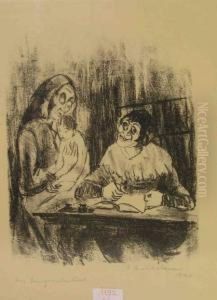Rachel Szalit Paintings
Rachel Szalit-Marcus was a Polish-Jewish artist, illustrator, and engraver, born on August 27, 1891, in Warsaw, Poland, which was then part of the Russian Empire. She was known for her portraits and illustrations that often reflected Jewish life and culture. Szalit grew up in an environment that nurtured her artistic talents, and she began to develop her skills at a young age. She studied art in Warsaw and later in Germany, where she was influenced by the German Expressionist movement and the works of artists like Käthe Kollwitz.
Szalit's work often depicted the struggles and traditions of Jewish people, with a particular focus on women and children. Her illustrations appeared in various books and periodicals. She also created ex libris bookplates, which are personalized prints used to denote ownership of a book. These works were highly detailed and combined elements of symbolism with traditional Jewish motifs.
During the 1920s and 1930s, Rachel Szalit's career was on the rise, and she became part of the vibrant cultural scene in Berlin. However, with the rise of the Nazi regime in Germany, Szalit, being Jewish, faced increasing persecution. Despite the mounting dangers, she continued to work and express her cultural identity through her art.
Tragically, Rachel Szalit's life and career were cut short by the Holocaust. She was deported by the Nazis to the Majdanek concentration camp near Lublin, Poland, where she was killed in 1942. Despite the loss of many of her works during the war, some of Szalit's art survived and has been exhibited posthumously, serving as a poignant reminder of the cultural contributions of the countless individuals lost during the Holocaust.

